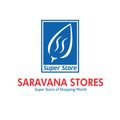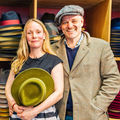Interviews
Real textile safety requires more than just RSL
18 Jun '09
3 min read
A Restricted Substance List, or RSL, is an essential first step in any serious textile safety program. A retailer, manufacturer, association, or regulatory body develops an RSL to identify the chemical substances that will be limited or prohibited in its products or industry. To be an effective tool for textile safety, an RSL should have the following characteristics:
• The RSL should be comprehensive and include relevant substances that are regulated or otherwise known to be dangerous for humans.
• The RSL's value limits on hazardous substances should be set at levels that provide acceptable protection for workers and consumers.
• An effective RSL must be updated regularly to capture changes in evolving manufacturing chemistry, governmental regulation, and expanding medical knowledge.
The International Oeko-Tex Association's RSL, which is used for its Oeko-Tex Standard 100 Certification, meets these criteria and more.
• In addition to regulated substances, the Oeko-Tex RSL includes chemicals that medical experts suspect of being harmful even if they are not yet regulated.
• The Oeko-Tex RSL's value limits reflect the most restrictive laws and are usually more rigorous than many governmental regulations require. Given the global nature of today's textile supply chain, this approach ensures that Oeko-Tex Standard 100 certified products from any country will meet a brand's or retailer's textile safety standards.
• The Oeko-Tex RSL's value limits are set according to a product's intended use. For example, children's apparel fabrics are held to stricter limits than window fashion fabrics.
The Oeko-Tex Standard 100 Certification is a global safety textile process that requires much more than simply comparing textiles against a Restricted Substance List. Oeko-Tex goes well beyond chemical analysis and assesses textiles in real life use situations. For example, textile products are subjected to perspiration to determine if harmful substances could be absorbed by human skin or to saliva to assess whether dangerous chemicals might be ingested if a child chews on a fabric.
Textiles are also tested to ensure that they do not emit harmful chemicals than could be inhaled. In addition, Oeko-Tex tests color fastness to ascertain that dye stuffs will not be absorbed or ingested and checks pH levels to make sure that textiles won't cause skin irritations. Oeko-Tex also audits certified goods so that textile safety standards are maintained over time.
A stringent RSL is an important tool for evaluating basic textile safety. However, practical, situational product testing is equally important. With independent, third-party Oeko-Tex Standard 100 Certification, brands and retailers can be confident that their textile products meet the highest global standards and have been tested and verified in actual use scenarios to make certain they are safe for real world consumers.
• The RSL should be comprehensive and include relevant substances that are regulated or otherwise known to be dangerous for humans.
• The RSL's value limits on hazardous substances should be set at levels that provide acceptable protection for workers and consumers.
• An effective RSL must be updated regularly to capture changes in evolving manufacturing chemistry, governmental regulation, and expanding medical knowledge.
The International Oeko-Tex Association's RSL, which is used for its Oeko-Tex Standard 100 Certification, meets these criteria and more.
• In addition to regulated substances, the Oeko-Tex RSL includes chemicals that medical experts suspect of being harmful even if they are not yet regulated.
• The Oeko-Tex RSL's value limits reflect the most restrictive laws and are usually more rigorous than many governmental regulations require. Given the global nature of today's textile supply chain, this approach ensures that Oeko-Tex Standard 100 certified products from any country will meet a brand's or retailer's textile safety standards.
• The Oeko-Tex RSL's value limits are set according to a product's intended use. For example, children's apparel fabrics are held to stricter limits than window fashion fabrics.
The Oeko-Tex Standard 100 Certification is a global safety textile process that requires much more than simply comparing textiles against a Restricted Substance List. Oeko-Tex goes well beyond chemical analysis and assesses textiles in real life use situations. For example, textile products are subjected to perspiration to determine if harmful substances could be absorbed by human skin or to saliva to assess whether dangerous chemicals might be ingested if a child chews on a fabric.
Textiles are also tested to ensure that they do not emit harmful chemicals than could be inhaled. In addition, Oeko-Tex tests color fastness to ascertain that dye stuffs will not be absorbed or ingested and checks pH levels to make sure that textiles won't cause skin irritations. Oeko-Tex also audits certified goods so that textile safety standards are maintained over time.
A stringent RSL is an important tool for evaluating basic textile safety. However, practical, situational product testing is equally important. With independent, third-party Oeko-Tex Standard 100 Certification, brands and retailers can be confident that their textile products meet the highest global standards and have been tested and verified in actual use scenarios to make certain they are safe for real world consumers.
Oeko-Tex Association
Popular News
Leave your Comments
Editor’s Pick
































-Ltd..jpg?tr=w-120,h-60,c-at_max,cm-pad_resize,bg-ffffff)





.jpg?tr=w-120,h-60,c-at_max,cm-pad_resize,bg-ffffff)
.jpg?tr=w-120,h-60,c-at_max,cm-pad_resize,bg-ffffff)






